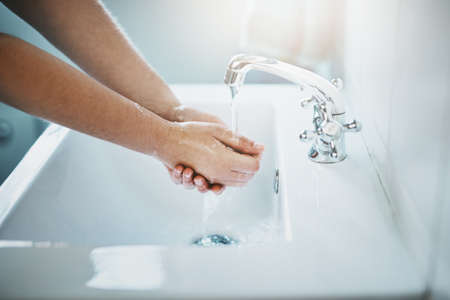Introduction: Why Household Chemicals Matter
Across the UK, our everyday routines often involve a wide array of household chemicals—whether it’s cleaning sprays, washing powders, or bathroom bleaches. While these products help us keep our homes fresh and tidy, their use carries implications that extend well beyond our four walls. Increasingly, experts and local communities are raising concerns about the impact these substances have when they eventually find their way into our waterways. From rivers winding through British countryside to coastal estuaries supporting diverse wildlife, UK water systems are under pressure from chemical pollutants that originate in domestic settings. Understanding how our daily habits contribute to this issue is crucial for safeguarding both the environment and public health. This article takes a closer look at why the chemicals we use at home matter so much for the health of Britain’s rivers and streams—and explores what can be done to minimise their negative effects.
2. How Household Chemicals Enter UK Waterways
Many people may not realise that the everyday chemicals we use at home have a direct route into our rivers, lakes, and coastal waters. In the UK, this journey typically begins with household drains—whether from washing machines, sinks, toilets, or garden runoff. When these drains carry away detergents, cleaning agents, and even personal care products, they often make their way to local sewage treatment plants. However, not all harmful substances are fully removed during wastewater treatment. Some chemicals are resistant to standard processes and can pass through filtration systems, eventually being released into nearby water bodies.
The Pathways from Home to Nature
The flow of household chemicals into UK waterways follows several main routes:
| Source | Main Pathway | End Destination |
|---|---|---|
| Kitchen & Bathroom Drains | Sewer Systems → Wastewater Treatment Plants | Rivers & Coastal Areas (after partial treatment) |
| Outdoor Runoff (gardens, driveways) | Surface Water Drains (often untreated) | Streams & Rivers |
| Improper Disposal (pouring down the drain or toilet) | Sewer Systems or Septic Tanks | Groundwater or Surface Water via leaks or overflow |
The Role of Local Infrastructure
The impact of household chemicals on waterways is closely linked to the capabilities of local infrastructure. Many areas in the UK still rely on combined sewer systems that channel both rainwater and sewage to treatment facilities. During periods of heavy rainfall—a common occurrence in Britain—these systems can overflow, releasing untreated wastewater directly into rivers and seas to prevent urban flooding. This means that more chemicals bypass treatment entirely during storms.
Weather Patterns and Seasonal Effects
The UKs famously changeable weather also plays a role in how chemicals travel through the environment. Prolonged rainfall increases surface runoff from gardens and roads, carrying pesticides, fertilisers, and cleaning residues straight into storm drains and nearby watercourses. Conversely, during dry spells, pollutants can build up on surfaces and are then washed away en masse when it finally rains—a phenomenon known as the “first flush” effect.
A Shared Responsibility
Understanding these pathways highlights the shared responsibility between households, communities, and local authorities. While individual actions matter, systemic improvements to infrastructure and public awareness are equally vital to protect our precious waterways for future generations.
![]()
3. Effects on UK Aquatic Life and Ecosystems
The impact of household chemicals on the UKs waterways is not limited to water quality alone; it has profound effects on native aquatic life and the delicate balance of local ecosystems. Many everyday products—such as detergents, cleaning agents, and personal care items—contain substances like phosphates, surfactants, and microplastics that find their way into rivers and streams. These chemicals can disrupt the natural processes that support healthy habitats.
When detergents rich in phosphates enter water systems, they can trigger algal blooms. This sudden growth of algae depletes oxygen levels in the water, making it difficult for fish, invertebrates, and other wildlife to survive. Native species like the European otter or freshwater mussels may struggle as their food sources diminish or as their habitats become inhospitable.
Furthermore, some surfactants and antimicrobial agents commonly found in cleaning products are toxic to aquatic organisms even at low concentrations. For example, the presence of these substances can impair the development of amphibian larvae or reduce the reproductive success of fish such as brown trout—a species iconic to British rivers.
Indirectly, household chemicals can affect ecological balance by altering the composition of microbial communities crucial for breaking down organic matter. Disrupted microbial activity hampers nutrient cycling, which in turn impacts plant growth and the entire food web within a river ecosystem.
Microplastics from personal care items like exfoliating scrubs or synthetic fibres released during laundry have also been detected in UK waters. These tiny particles are ingested by aquatic creatures, accumulating up the food chain and potentially reaching human consumers through seafood.
The cumulative effect of all these factors is a less resilient ecosystem—one that is more susceptible to disease outbreaks, invasive species, and further pollution. Protecting our waterways means recognising how our daily choices resonate far beyond our homes, shaping the future health of Britain’s cherished rivers and lakes.
4. Hidden Chemicals in Common Household Products
Many household products used across the UK contain chemicals that may seem harmless at first glance, but their presence and accumulation can significantly impact our waterways. Understanding what’s inside your cleaning cupboard is the first step towards minimising this impact. Below, we highlight typical ingredients found in British households and how these substances contribute to water pollution.
Common Chemicals Found in Everyday Products
From bathroom sprays to laundry detergents, the following table outlines some of the most prevalent chemicals you’ll encounter and their environmental effects:
| Product Type | Typical Ingredient | Environmental Impact |
|---|---|---|
| Washing-Up Liquids | Sodium Lauryl Sulphate (SLS) | Harmful to aquatic life; disrupts fish gill function. |
| Laundry Detergents | Phosphates | Causes algal blooms, reducing oxygen for other organisms. |
| All-Purpose Cleaners | Benzalkonium Chloride | Toxic to aquatic plants and animals; persists in water. |
| Oven Cleaners | Sodium Hydroxide | Alters pH balance of rivers and streams, impacting ecosystems. |
| Bleach Products | Sodium Hypochlorite | Reacts with organic matter to form harmful by-products. |
| Toilet Cleaners | Hydrochloric Acid | Erosive; damages sewage infrastructure and aquatic habitats. |
| Air Fresheners | Volatile Organic Compounds (VOCs) | Affects air and water quality; toxic to wildlife. |
The Importance of Reading Labels in the UK Context
While many ingredients are listed on packaging, UK regulations allow for some terms like “fragrance” or “preservative” to mask a cocktail of chemicals. Being vigilant when shopping—looking for eco-labels such as Ecolabel or Cruelty Free International—can help you avoid products with hidden pollutants. Opting for fragrance-free or plant-based alternatives is another simple way to reduce chemical runoff into local waterways.
What to Watch Out For on Labels:
- Avoid: SLS, parabens, phosphates, nonylphenol ethoxylates (NPEs), ammonia-based compounds.
- Prefer: Biodegradable surfactants, vinegar, bicarbonate of soda, citric acid-based cleaners.
Cumulative Effects on UK Waterways
The combined usage of these everyday products in millions of British homes leads to trace amounts entering drains and eventually rivers. Over time, these traces accumulate, causing significant ecological shifts such as increased toxicity for aquatic life, changes in plant growth patterns, and disruption of natural microbial balances essential for healthy waterways.
5. Ways to Minimise Chemical Impact at Home
Taking practical steps at home can greatly reduce the flow of household chemicals into UK waterways. Here are some locally relevant tips to help you make a positive difference:
Choose Eco-Friendly Products
Opt for cleaning and personal care products labelled as biodegradable, phosphate-free, or with the EU Ecolabel. Many supermarkets and local shops in the UK now stock greener alternatives that are just as effective but far gentler on our water systems.
Be Mindful with Quantities
Follow dosage instructions carefully when using detergents or cleaning fluids. Overusing products not only wastes money but also increases chemical residues entering drains and eventually rivers.
Proper Disposal Matters
Avoid pouring leftover paints, oils, medicines, or harsh chemicals down the sink or toilet. Instead, take advantage of your local council’s hazardous waste collection schemes or pharmacy medicine disposal services. This prevents toxins from reaching treatment works unequipped to remove them fully.
Embrace Greener Routines
Try traditional cleaning methods using vinegar, bicarbonate of soda, and lemon juice for everyday tasks. These time-tested remedies are safer for both your family and aquatic life, and they’re widely available in UK shops.
Laundry Habits
Washing clothes at lower temperatures and waiting for a full load reduces detergent use and saves energy. Switching to eco-friendly laundry liquids further lessens chemical impact on waterways.
Support Local Environmental Initiatives
Get involved with community river clean-ups or campaigns promoting sustainable living. Supporting local refill shops and zero-waste stores can also help you cut down on single-use packaging and non-biodegradable products.
By adopting these UK-specific habits, we can all play a part in protecting our precious rivers and coastlines for future generations while enjoying a healthier home environment.
6. Community Action and Local Resources
Protecting UK waterways from household chemical pollution is not just a task for individuals; it is a collective effort that thrives on community action and local engagement. Across the UK, local councils, neighbourhood groups, and national campaigns are empowering residents to become stewards of their local rivers, lakes, and streams.
The Role of Local Councils
Many councils across Britain have introduced practical initiatives to help households reduce chemical runoff. These include providing information on safe disposal points for hazardous waste, organising annual collection days for unwanted chemicals, and distributing guidance leaflets outlining what should never go down the drain. Some councils even host workshops or talks at community centres, inviting experts to explain the impact of common cleaning products on the aquatic environment.
Neighbourhood Groups Making a Difference
Grassroots organisations often play a vital role in raising awareness and driving change at the local level. From “Friends of the River” projects to neighbourhood litter-picking groups, these collectives often organise river clean-ups, educational walks, and water testing sessions. They create opportunities for neighbours to connect over a shared goal: safeguarding their local blue spaces for future generations.
National Campaigns Empowering Change
On a broader scale, national campaigns such as “Love Your River” or “Think Before You Flush” harness social media and partnerships with retailers to spread key messages about reducing chemical pollution. These campaigns encourage people to read labels, choose environmentally-friendly products, and dispose of household chemicals responsibly. By providing clear calls-to-action and resources—like downloadable guides or pledge schemes—they make it easier for everyone to get involved.
Connecting with Local Resources
If you’re interested in doing your bit, look out for local resources through your council’s website or community noticeboards. Many areas now offer free water-saving kits or host eco fairs where you can learn about sustainable alternatives. Even simple actions—such as sharing tips with neighbours or supporting local environmental groups—can collectively make a positive impact on the health of UK waterways.
7. Conclusion: Embracing Change for Cleaner Waterways
The journey to protecting the UK’s waterways begins at home, with the simple choices we make each day. By becoming more mindful of the household chemicals we use and adopting eco-friendly alternatives, each of us can play a meaningful role in reducing pollution. These small yet significant changes not only safeguard our rivers and streams but also ensure a healthier environment for ourselves, local wildlife, and future generations. The long-term benefits stretch far beyond our doorsteps—cleaner waterways contribute to greater well-being, preserve the unique beauty of the British countryside, and support thriving ecosystems. Let’s take pride in making thoughtful decisions that collectively create a positive ripple effect, nurturing both our communities and the natural world we cherish. Every action counts; together, we can embrace change for a cleaner, greener UK.

